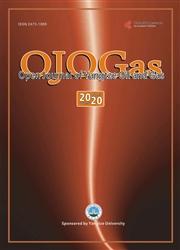Structural and Sedimentary Characteristics of Hydrocarbon-Rich Sags in Lacustrine Sub-Basin of Half Graben Type, Pearl River Mouth Basin, South China Sea
引用次数: 2
Abstract
Pearl River Mouth Basin undergoes complex tectonic evolution processes and forms lacustrine, transitional and marine sediments. Drilling shows that there exist large petroleum reserves in the hydrocarbon-rich sags of Pearl River Mouth Basin, South China Sea. To reduce the risk, the exploration, structural and sedimentary characteristics of the hydrocarbon-rich sags should be identified and described. Drilling, seismic, and microfossil data are integrated to interpret the structural and sedimentary evolution of the hydrocarbon-rich sags in Pearl River Mouth Basin. By analyzing the tectonic and sedimentary evolutionary characteristics, three conclusions may be drawn: 1) The present regional tectonic characteristics of the PRMB are formed by mutual interactions of the Eurasian Plate, Pacific Plate, Philippine Plate and Indian Plate. During the Paleocene to early Eocene and late Eocene and early Oligocene, the PRMB is at the rifting stage. During the late Oligocene, the PRMB was at the rifting-depression transitional stage. After the Oligocene, the PRMB is at the depression stage. 2) Tectonic conditions control the sedimentation process in the hydrocarbon-rich sags. During the lacustrine sedimentation stage, synsedimentary faults and intense faulting control the sedimentation. During the transitional sedimentation stage, weak fault activity influences the deposition process in the hydrocarbon-rich sags. During the marine sedimentation stage, weak fault activity and depression activity control the deposition process in the hydrocarbon-rich sags. 3) Tectonic evolution affects the deposition process. The lacustrine, transitional and marine sedimentation corresponds to different tectonic conditions. The lacustrine sedimentation is formed under fault activity during the rifting stage. The transitional sedimentation is formed under weak fault activity during the late rifting stage. The marine sedimentation is formed under weak fault activity and depression activity during the rifting-depression and depression stages. 4) The half graben is beneficial for the formation of lacustrine source rocks, which is responsible for the hydrocarbon-rich sag. Therefore the half graben mode contributes to the hydrocarbon-rich sags.南海珠江口盆地半地堑型湖相次盆地富油气凹陷构造与沉积特征
珠江口盆地经历了复杂的构造演化过程,形成了湖相沉积、过渡沉积和海相沉积。钻探结果表明,南海珠江口盆地富油气凹陷具有较大的石油储量。为了降低风险,应识别和描述富烃凹陷的勘探、构造和沉积特征。综合钻探、地震和微体化石资料,解释珠江口盆地富烃凹陷的结构和沉积演化。通过对构造和沉积演化特征的分析,可以得出以下三个结论:1)珠江三角洲目前的区域构造特征是欧亚板块、太平洋板块、菲律宾板块和印度板块相互作用形成的。在古新世至始新世早期、始新世晚期和渐新世早期,PRMB处于裂谷作用阶段。渐新世晚期,PRMB处于裂谷-坳陷过渡阶段。渐新世以后,PRMB处于坳陷阶段。2) 构造条件控制着富烃凹陷的沉积过程。在湖泊沉积阶段,同沉积断层和强烈断裂控制着沉积作用。在过渡沉积阶段,弱断裂活动影响了富烃凹陷的沉积过程。在海相沉积阶段,弱断裂活动和凹陷活动控制着富烃凹陷的沉积过程。3) 构造演化影响沉积过程。湖泊沉积、过渡沉积和海洋沉积对应不同的构造条件。湖相沉积是在裂谷作用阶段的断裂活动下形成的。过渡沉积是在裂谷作用晚期的弱断裂活动下形成的。海相沉积是在断陷-坳陷阶段的弱断裂活动和坳陷活动下形成的。4) 半地堑有利于湖相烃源岩的形成,是形成富烃凹陷的原因。因此,半地堑模式有助于形成富油气凹陷。
本文章由计算机程序翻译,如有差异,请以英文原文为准。
求助全文
约1分钟内获得全文
求助全文

 求助内容:
求助内容: 应助结果提醒方式:
应助结果提醒方式:


